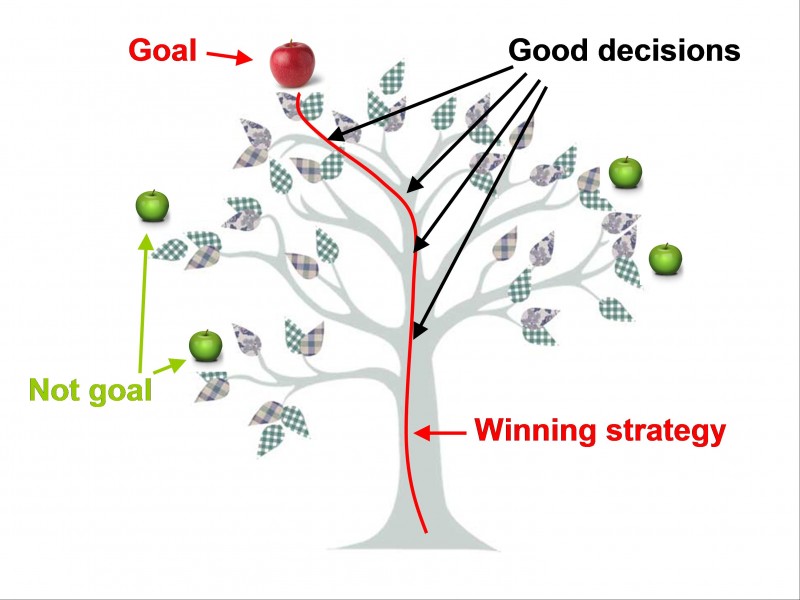When you are thinking about a big decision, how do you decide? What information strategy do you use? Once you have done all the work in clarifying your values, style, and optimal energy state, how do you utilize your external resources to be in a better position to choose?
Here are tips to strengthen your information strategy:
1. Learn more about the things you do not know by tapping into the collective intelligence of others.
A. Talk to people in your network who made that exact decision. If you are thinking about leaving a big corporate job to start your practice, find somebody who traveled that path, and learn those lessons. People do some version of this all the time, think about right before you go to a restaurant, you will check the Yelp reviews and see how satisfied people were with the meals. Approach it with humility, do not rely on what you think something will be like, ask a range of questions, such as what are my blindspots around this decision so you can get the information you have not considered.
In an interview, Harvard Professor Daniel Gilbert shared with Shankar Vedantam of Hidden Brain that some people might dismiss this approach due to the “illusion of diversity,” which is the idea that we think we are utterly unique, that other people’s experiences might tell us a little bit about ourselves, but not very much. Gilbert disagrees with this assertion because we are more similar than we think. This concept of surrogation, seeing how others like something, and allowing that to guide us can be a constructive way to decide. Even spending time on internet searches can yield powerful results. According to a study in the New England Journal of Medicine, 58% of tricky clinical diagnostic cases could be solved using internet search and surrogation. If your dilemma is more common, the chances increase. It could be good to aggregate the opinions of people who have made the decision you are pondering as a guide for what is right for you.
B. Tap extended networks. Chip and Dan Heath offer this method – send an email to 5 people in your circle who are not close friends or colleagues. Describe your dilemma and ask if they know anyone who might have some insights. The goal is to enter different systems since most of your friends and close colleagues probably know each other and have linked associations. Plus, you probably already know what they know through your conversations so you want to explore those weak ties for fresh ideas.
C. Seek contrarian perspectives. When approaching a decision, we tend to pick something and then find additional information to support it, which is known as confirmation bias. Based on one study in the book Decisive, when doctors were sure of their diagnosis, they were wrong 40% of the time. In another study, when university students believed that they had a 1% chance of being wrong, they were wrong 27% of the time. We have a false sense of certainty because we avoid evidence that challenges our entrenched beliefs.
A great way to avoid confirmation bias is to seek outside opinions from people who bring different perspectives to weigh your options more objectively and spot your subjective or irrational tendencies. Whom do you know that you trust and is an entirely different thinker than you or somebody who could occupy a devil’s advocate role to tell you why your leading decision is wrong? In her study of Silicon Valley firms, Kathy Eisenhardt found that the CEOs who made the quickest, most effective strategic decisions had a senior counselor who knew the industry well and could provide trustworthy guidance. When asking those experts for advice on your choices, do not just ask them, “What do you think?” or “Do you like my idea?” How about asking disconfirming questions: “What’s the biggest obstacle you see to what I’m trying to do?” “If I fail, what would be the cause?”
D. Triangulate responses. A chief enemy of good decisions is the lack of sufficient perspectives on a problem.
Maybe you are considering taking your business into the European markets, how about getting three area experts committed to their right answers, and having them make their case. You can listen to the discussion, triangulate their responses, glean lessons, and make more comprehensive decisions. The quality of your synthesis can determine the quality of your decision-making.
When it comes to decision-making, there are things we do not know (known unknowns), and then there are things that we do not know what we do not know (unknown unknowns). When we can spend some time seeking out other resources, both in and out of our network, it can help us learn more about the challenge and make decisions more easily.
Quote of the day: “Stay committed to your decisions, but stay flexible in your approach.” -Tony Robbins
Q: When was the last time you sought out people in and out of your network to help with a big decision? How did it go? Comment and share below, we would love to hear from you!
[The next blog 4/8 will focus on utilizing creative strategies for better decision-making.]
As a leadership development and executive coach, I work with leaders to help them make hard decisions, contact me to explore this topic further.


